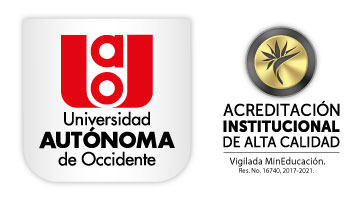The Flavor of the World and the Comm unicative Interaction in Cooking and Comm ensality
Abstract
This article explains how human learning is marked, in a significant way, by the communicative experience that the human being has in the kitchen and the dining room. The senses learn and recognize the traditional, homemade, and foreign flavors through sociability in cooking and commensality; but this communicative experience also allows the individual to become a citizen who is a carrier of certain ways and manners, and to reproduce in accordance with their subjectivity certain ideological positions based on their social experience. Finally, it is argued that both cooking and commensality are determining factors in the care of others.
Downloads
References
Bajtín, M. (2005). La cultura popular en la Edad Media y en el Renacimiento. El contexto de François Rabelais. Alianza.
Bourdieu, P. (1991). El sentido práctico. Tauros.
Calero, S., Restrepo P. y Rivera, C. (2015). Conversación con Zandra Pedraza. En S. Calero, C. Rivera y P. Restrepo (Comps.), Cuerpo y Comunicación (pp. 25-48). Universidad Autónoma de Occidente.
Elias, N. (1989). El proceso de la civilización: investigaciones sociogenéticas y psicogenéticas. Fondo de Cultura Económica.
Foucault, M. (2007). Historia de la sexualidad 2. El uso de los placeres. Siglo XXI Editores.
Freedman, P. (2007). Introduction. A new history of cuisine. In: P. Freedman (Ed.), Food the history of taste (pp. 7-33). Thames & Hudson.
Grosso, J. L. (2004). Interculturalidad latinoamericana. Los escenarios de la comunicación y la ciudadanía. Interaçoes, 4(6), 17-45.
Haldis, H. (December, 2007). “Sharing food, sharing taste? Consumption practices, gender relations and individuality in Czech families. Anthropology of Food, S3. https://journals.openedition.org/aof/1912
Le Breton, D. (2007). El sabor del mundo. Una antropología de los sentidos. Nueva Visión.
Leigton, T. D. y Okomura, S. (1996). Dōgen´s Pure Standards for the Zen Community. An original translation by Eihei Shingi. State University of New York Press, Albany.
Merleau-Ponty, M. (1997). Fenomenología de la percepción., Barcelona.
Pedraza, Z. (1999). En cuerpo y alma: visiones del progreso y la felicidad. Uniandes.
__________. (2007). Políticas y estéticas del cuerpo: la modernidad en América Latina. En: A. Apellido (Ed., Comp.) Políticas y estéticas del cuerpo en América Latina (pp. 27-48). Uniandes.
________. (2010). Saber, cuerpo y escuela. El uso de los sentidos y la educación somática. Calle 14, 4(5), 47-56.
Seremetakis, N. C. (1996). The Senses still. Perception and Memory as Material Culture in Modernity. University of Chicago Press.
Vico, G. (2006). Principios de una Ciencia Nueva: en torno a la naturaleza común de las naciones. Fondo de Cultura Económica.
Warde, A. (1997). Consumption, food & taste. SAGE.

This work is licensed under a Creative Commons Attribution-NonCommercial-NoDerivatives 4.0 International License.
Al enviar los artículos para evaluación, los autores aceptan que transfieren a la Revista de Economía y Administración derechos para su publicación en cualquier formato o medio. Para aumentar su visibilidad, los autores autorizan el envío de los documentos a bases de datos y sistemas de indización, o para ser consultados de manera gratuita y electrónica en https://revistas.uao.edu.co/ojs/index.php/REYA, así como en las bases de datos donde la Revista se encuentra registrada. A su vez, los autores serán responsables del contenido de los artículos; por lo tanto, no comprometen los principios o políticas de la Universidad Autónoma de Occidente, ni de la Revista de Economía y Administración y los miembros de sus comités.

